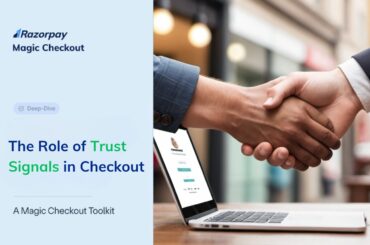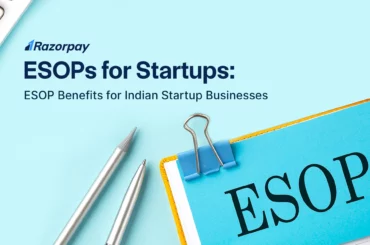E-commerce has transformed how businesses reach customers, allowing for global and 24/7 operations. In a competitive market, effective e-commerce marketing is essential for driving sales and ensuring growth. This article will explore e-commerce marketing, its types, strategies, and practical tips to boost your online presence.
Table of Contents
What Is E-commerce Marketing?
E-commerce marketing involves strategies that drive traffic to your online store, convert visitors into customers, and retain them for repeat business. It encompasses a variety of tactics, including SEO, content marketing, social media engagement, and paid advertising, all aimed at boosting online sales and brand visibility.
Types of E-commerce Marketing
Understanding the various types of e-commerce marketing is essential for developing a successful e-commerce marketing strategy. Here’s a quick overview:
- Search Engine Optimisation (SEO) – SEO focuses on improving your website’s visibility on search engines to drive organic traffic. It’s a crucial element of any e-commerce marketing approach.
- Content Marketing – This involves creating and sharing valuable content to attract and engage your target audience, helping build brand authority.
- Affiliate Marketing – Partnering with affiliates who promote your products, earning a commission for each sale generated through their marketing efforts.
- Email Marketing – Using targeted emails to nurture lead generation, boost customer retention, and promote special offers.
- Brand Marketing – Establishing a strong brand identity and promoting it consistently across all channels to build trust and loyalty.
- Behavioural Marketing – Personalising marketing messages based on customer behaviour and preferences to increase conversion rates.
- Buzz Marketing – Generating excitement and word-of-mouth around your brand through viral content or campaigns.
- Social Media Marketing – Leveraging social media platforms to engage and interact with your audience, build community, and promote your products.
- Search Engine Marketing (SEM) – Paid advertising on search engines to drive traffic and increase visibility for specific keywords.
- Cloud Marketing – Using cloud-based tools to streamline and automate marketing tasks, enhancing efficiency and reach.
- Conversational Marketing – Engaging with customers through real-time conversations, such as chatbots or live chat, to improve customer experience.
- Augmented Marketing – Enhancing marketing efforts using augmented reality (AR) to provide interactive and immersive experiences.
- Local Marketing – Targeting local customers through tailored marketing efforts, such as local SEO and geo-targeted ads.
E-commerce Marketing Strategy
Building a comprehensive e-commerce marketing strategy is essential to staying competitive in today’s digital landscape. Below are key strategies to consider:
1. Invest in SEO
SEO is the backbone of your online visibility. By optimising your website for relevant keywords, you increase your chances of ranking higher on search engines, driving organic traffic. Implement on-page SEO tactics, like optimising meta tags and content, while also focusing on building quality backlinks.
2. Capture More Email Subscribers
Email marketing remains one of the most effective channels for customer retention and conversion. Use pop-ups, incentives, and clear calls to action on your website to grow your email list. Offering value in exchange for email addresses, such as exclusive discounts or content, can increase your subscriber count.
3. Improve Your Email Campaigns
Once you have a strong email list, refine your campaigns by segmenting your audience and personalising messages. A/B testing subject lines and content can help optimise open rates and conversions. Ensure your emails provide value and are visually appealing to keep your subscribers engaged.
4. Personalising the Customer Experience
Personalisation enhances customer satisfaction by delivering relevant content and offers. Use data such as browsing history and past purchases to tailor product recommendations, email content, and even website layout for individual users.
5. Omnichannel Marketing
An omnichannel approach ensures a seamless shopping experience across multiple touchpoints, whether online or in-store. Integrate your marketing channels so that customers have a consistent experience with your brand, regardless of how they interact with you.
6. Collaborating With Influencers
Influencer marketing can amplify your brand’s reach. Partner with influencers whose audience aligns with your target market to promote your products. Ensure they create authentic content that resonates with their followers.
7. Optimising Marketing Content
Content is key to driving traffic and conversions. Regularly update your blog, product descriptions, and other website content with relevant, high-quality information. Ensure your content is SEO-optimised and tailored to address your audience’s needs and pain points.
8. Offering a Shopping Experience via Social Media
Social commerce is growing rapidly. By integrating shopping options directly into social media platforms like Instagram and Facebook, you make it easier for customers to purchase products without leaving the app. This can boost sales and enhance the shopping experience.
9. Using Paid Advertising
Paid advertising, such as Google Ads or social media ads, allows you to reach a larger audience quickly. Target your ads based on demographics, interests, and behaviour to maximise their effectiveness and ROI (Return on Investment).
10. Optimising Your E-commerce Platform for Mobile
With the majority of consumers shopping on mobile devices, it’s crucial to optimise your website for mobile users. Ensure your site is responsive, loads quickly, and offers a seamless user experience across all devices.
11. Using Data Analytics and AI
Data analytics and AI can help you understand customer behaviour, predict trends, and optimise your marketing efforts. Use these tools to make data-driven decisions, personalise customer experiences, and improve overall performance.
12. Sell on Marketplaces
Expanding your reach by selling on popular marketplaces like Amazon, eBay, and Flipkart can increase your visibility and sales. Ensure your products are optimised for each platform to stand out among competitors.
13. Upsell Your Products
Encourage customers to buy more by suggesting complementary products or offering upgrades at checkout. Upselling can increase your average order value and enhance the shopping experience.
14. Reduce Abandoned Carts
Cart abandonment is a common issue in e-commerce. Implement strategies like sending follow-up emails, offering discounts, or using exit-intent pop-ups to recover lost sales and encourage customers to complete their purchases.
15. Engage Online Store Visitors With Live Chat
Live chat offers real-time support to customers, helping to resolve queries instantly. This can improve customer satisfaction and increase the likelihood of a purchase. Implement live chat on your website to enhance customer engagement.
16. Offer Interactive Product Visuals
Interactive visuals like 360-degree views allow customers to explore products in detail before purchasing. This can increase customer confidence and reduce returns by providing a clearer understanding of the product.
17. Start Video Marketing
Video content is highly engaging and provides an effective way to showcase your products. Use videos for product demonstrations, customer testimonials, or brand storytelling to capture your audience’s attention and drive conversions.
18. Run an Affiliate Marketing Program
Affiliate marketing leverages partners to promote your products in exchange for a commission. This can expand your reach and bring in new customers. Set up a clear and attractive affiliate program to incentivise participation.
19. Leverage User-Generated Content
User-generated content, such as customer reviews and social media posts, builds trust and authenticity. Encourage customers to share their experiences with your products and showcase this content on your website and social channels.
E-commerce Marketing Tips
1. Align Goals With Industry Standards
Establish clear objectives by referencing industry benchmarks. This helps you set realistic targets that align with market expectations, ensuring your strategy is competitive and achievable.
2. Break Down Your Plan Into Actionable Steps
Simplify your e-commerce marketing strategy by breaking it into smaller, manageable tactics. This approach allows you to focus on specific tasks, making it easier to implement and track progress.
3. Enhance Customer Experience for Both New and Loyal Clients
Focus on delivering exceptional experiences to both new and returning customers. Personalised offers, quality service, and consistent engagement can build long-term loyalty and satisfaction.
4. Continuously Monitor and Adapt Your Strategy
Regularly assess your marketing efforts to identify what’s working and what needs improvement. This ongoing evaluation ensures that your strategy remains effective and responsive to changes in the market.
5. Invest in Continuous Learning and Development
Stay ahead of the curve by making an investment in ongoing learning and development. This includes keeping up with industry trends, learning new tools, and refining your marketing skills to stay competitive.
How Razorpay Helps You Launch an Online Store?
- Sign up on Razorpay – Begin by creating an account on Razorpay to access the dashboard.
- Create a payment page – Choose ‘Payment Pages’ on the left panel and click on ‘Create Payment Button’.
- Select a template – Pick a template that suits your online store needs from the available options.
- Add store details – Fill in your page title, logo, product images, descriptions, and pricing details.
- Publish your page – After entering all required details, publish your payment page.
- Customise your URL – Edit the URL to align with your brand, ensuring your store has a personalised touch.
Conclusion
By implementing a well-rounded strategy and leveraging the right tools, you can build a thriving online presence that attracts and retains customers, contributing to overall e-commerce growth. Understanding and adapting to e-commerce growth trends is crucial for businesses looking to stay competitive in the rapidly evolving digital marketplace.
Frequently Asked Questions
Q1. How is e-commerce marketing different from traditional marketing?
E-commerce marketing focuses on digital channels, such as SEO, social media, and email, to reach customers online, whereas traditional marketing often relies on physical mediums like print ads and billboards.
Q2. What are the key components of a successful e-commerce marketing strategy?
A successful strategy includes SEO, content marketing, social media, email campaigns, and data analytics, all working together to drive traffic, engage customers, and boost conversions.
Q3. How can I identify my target audience for e-commerce marketing?
Use market research, customer surveys, and data analytics to understand your audience’s demographics, preferences, and online behaviour, helping you tailor your marketing efforts effectively.
Q4. What are the most effective e-commerce marketing channels?
SEO, social media, email marketing, and paid advertising are among the most effective channels for reaching and engaging customers online.
Q5. How can I optimise my e-commerce website for search engines?
Focus on keyword optimisation, improving site speed, creating high-quality content, and ensuring mobile-friendliness to enhance your website’s visibility on search engines.
Q6. What are the essential elements of a high-converting e-commerce website?
A high-converting website features user-friendly navigation, fast loading times, clear product descriptions, high-quality images, and a streamlined checkout process.
Q7. How can I improve the user experience on my e-commerce site?
Enhance user experience by simplifying navigation, offering responsive design, providing clear calls to action, and ensuring a seamless checkout process.
Q8. How can I attract new customers to my e-commerce store?
Utilise SEO, social media marketing, influencer collaborations, and paid ads to attract new visitors and convert them into customers.
Q9. What is the importance of customer relationship management (CRM) in e-commerce?
CRM helps manage customer interactions, improve satisfaction, and build loyalty by providing insights into customer preferences and behaviours.
Q10. How can I handle customer complaints and returns effectively?
Respond promptly to complaints, offer clear return policies, and provide excellent customer service to resolve issues and maintain customer trust.
Q11. What are the key metrics to track in e-commerce marketing?
Track metrics like conversion rate, customer acquisition cost (CAC), lifetime value (LTV), and bounce rate to evaluate your marketing performance.
Q12. How can I measure the return on investment (ROI) of my e-commerce marketing campaigns?
Calculate ROI by comparing the revenue generated from your marketing campaigns against the costs incurred, using tools like Google Analytics for detailed insights.
Q13. What tools can I use to analyse e-commerce data?
You can use tools like Google Analytics, SEMrush, and HubSpot to track, measure, and analyse your e-commerce data for better decision-making.
Q14. What are the biggest challenges facing e-commerce businesses today?
The biggest challenges include intense competition, maintaining customer loyalty, handling logistics, managing data privacy, and adapting to rapidly changing technology trends.





